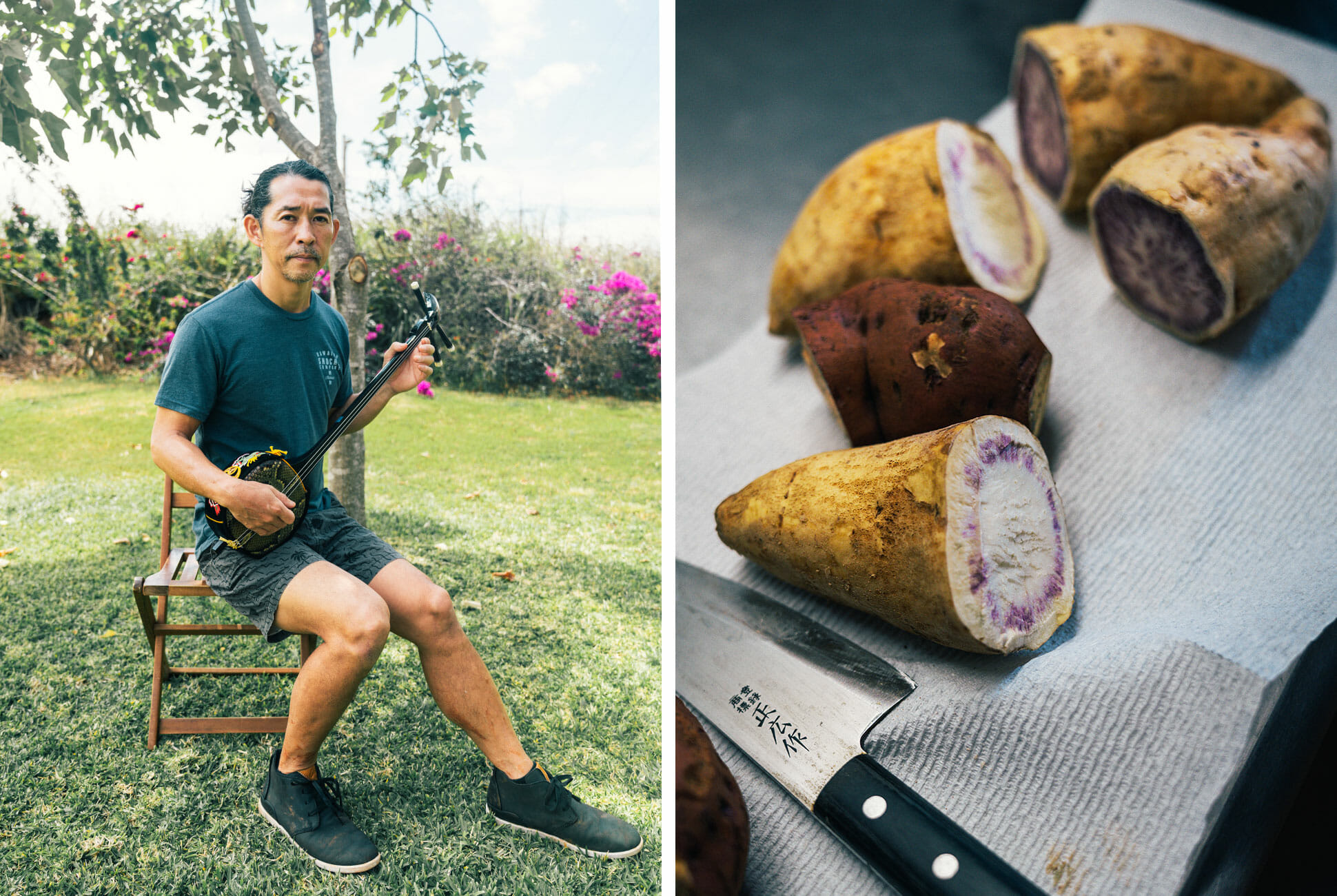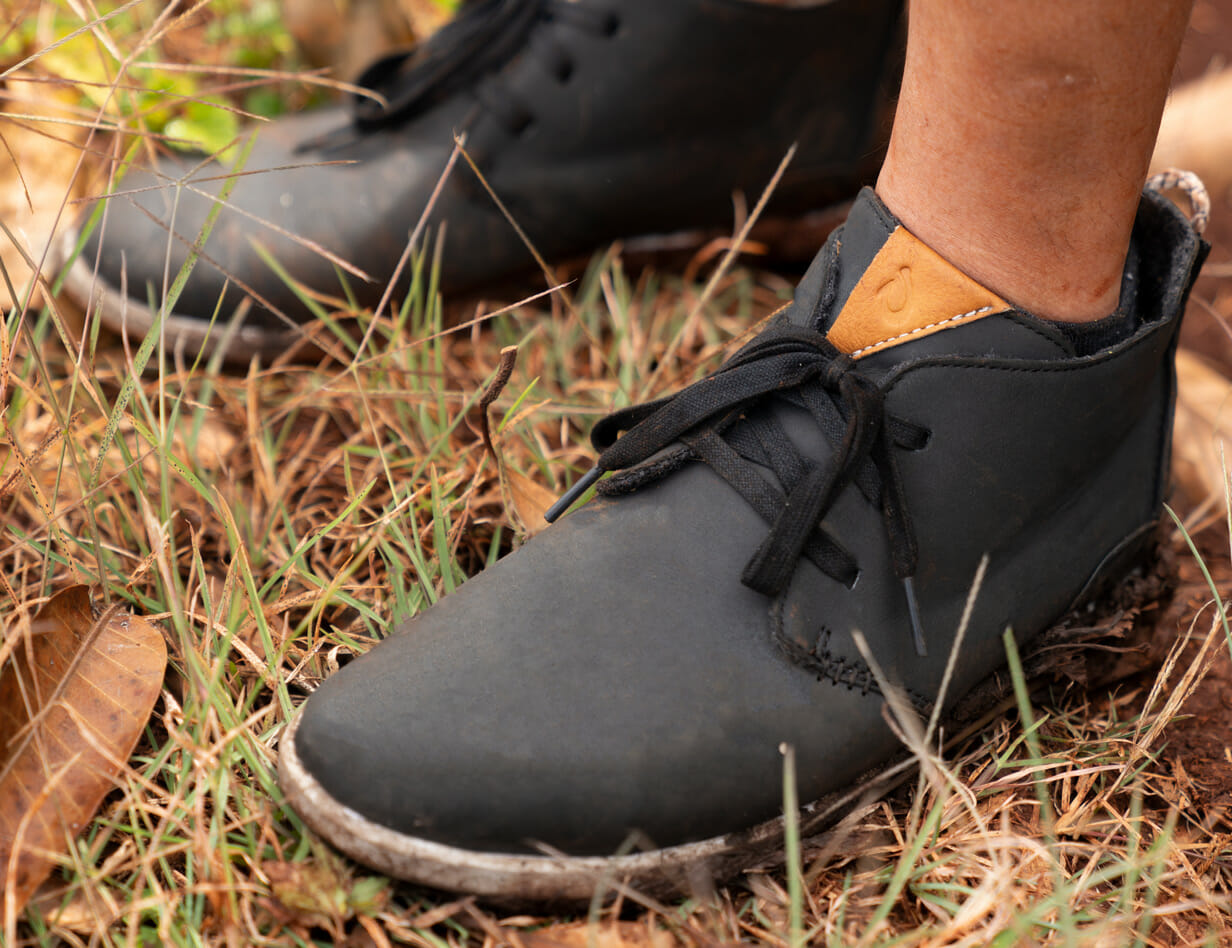
Hawaii saw the arrival of its first Japanese immigrants in 1885 and today, residents coming from Japan amount to nearly 17% of the population on these Pacific islands. Their cultural influence is part of the fabric of Hawaii and yet Ken Hirata is the only producer of one of Japan’s most consumed spirits, Shochu, on Oahu.
Hirata was first inspired to begin producing Shochu more than 20 years ago while on a Hawaiian vacation. Inspired by a fermented taro dish, poi, Hirata was reminded of the spirit — traditionally made from sweet potato — a vegetable that’s in no short supply here. The thought stayed with him, and years later, when looking for a simpler life, Hirata decided to go all-in on his plan to launch a shochu brand on Oahu.
First learning the craft, however, is not so simple. Hirata began by approaching a master, begging to become his apprentice. “Usually that type of technique — recipes and everything — is passed within family members, generation to generation,” he says. His request was denied repeatedly, but finally, after his eighth try, his master accepted. Now relocated in Kagoshima, Hirata studied Shochu-making for three years (a crash-course, he says).
From there, Hirata moved to the North Shore of Oahu, where he and his wife made it a top priority to integrate with their neighbors in Haleiwa. It took time, but eventually, Hirata developed relationships with local farmers and business owners. “We had to struggle in the beginning. It was pretty hard because I didn’t know anybody and so it took time for me to get accepted. But after I got inside the circle, people started to support us,” he says. “We were just trying hard [to be] sincere and respect the local culture and the people in Hawaii.”
After seven seasons, Hirata’s customers travel far and wide for his product. He estimates some 40% are visitors from Japan, another 40% are local and the rest come to his on-site shop from the mainland. “In the beginning, a majority of our customers are local people in Hawaii,” Hirata says. “People in Hawaii try to support local products or produce as much as they can, even though the price is higher than the imported goods.”

While he came here for a simpler, slower life, Shochu making is still a labor of love. In shochu production, there is an on-season and off-season. During the on-season, days start at 5:00 am. In short, his shochu is made by steaming rice in a large wooden steamer, which is then is mixed with koji, to kickstart fermentation. The rice and sweet potatoes are then fermented in ceramic vats (a gift from Hirata’s shochu master). The mash is then distilled and aged for six months before bottling. “I have to be here 24/7,” Hirata says.
But in the off-season, Hirata gets the restful life he came to Hawaii for. “I have lots of freedom. I get up in the morning and eat breakfast with my wife and just relax, talk to local people who visit us. [I] take it easy — surf, play music and drink at night. That’s about it,” he quips. “Pretty simple.”
Meet the Hawaiiloa
This slick chukka was created to commemorate the iconic Hawaiiloa voyaging canoe. Made with a waterproof nubuck leather upper, a wool lining and hand-stitched details, it’s also lightweight and equipped with a ‘Wet Grip Rubber’ outsole so it’s ready to be on land or seaborne. Buy Now: $150)





